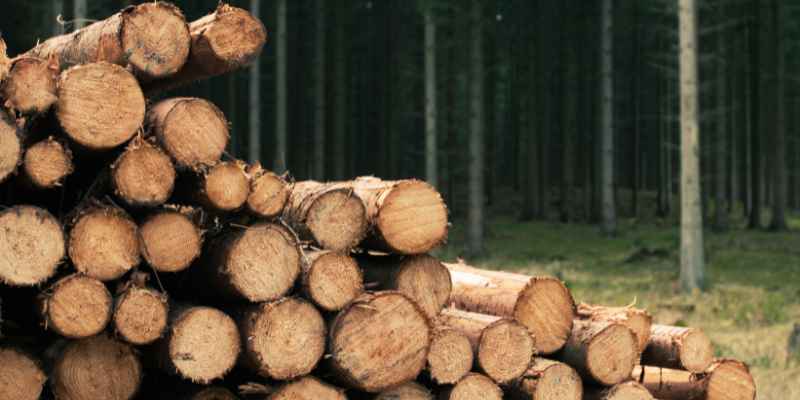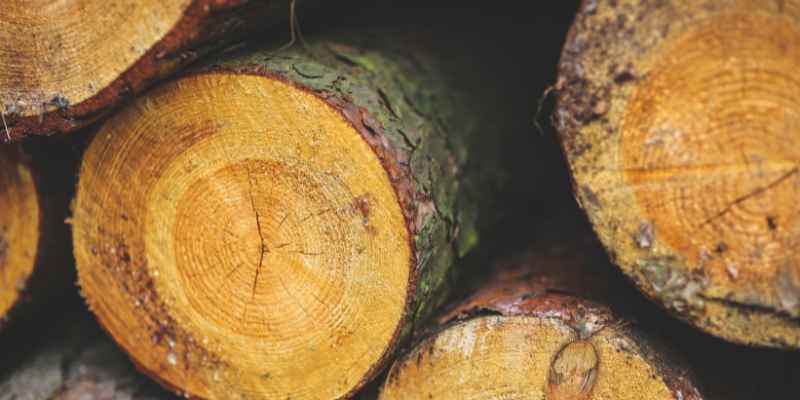Willow wood is versatile; it can be used for furniture, craftwork, and erosion control. Additionally, it is lightweight and flexible, making it valuable for various applications.
Willows are known for their strong root systems, which help stabilize soil, making them suitable for environmental purposes. The wood is also utilized in making baskets and craft items due to its flexibility and lightness. While not commonly used in the United States for furniture, willow wood is readily available and reasonably priced, offering an economical option for those seeking a unique material.
Despite being a softwood, willow’s shock resistance and lightweight nature make it a desirable choice for certain woodworking projects.
Different Uses Of Willow Wood
Willow wood, known for its flexibility and light weight, has a variety of uses in different industries. Let’s explore the versatile applications of willow wood in various products and materials.
Manufacture Of Boxes, Brooms, And Furniture
Willow wood is commonly used in the production of boxes, brooms, and various types of furniture. Its flexibility and durability make it ideal for crafting these items.
Making Dolls, Flutes, And Toys
Artisans utilize willow wood to create intricate dolls, melodious flutes, and playful toys. Its smooth texture and workability make it a preferred choice for crafting artistic pieces.
Production Of Wood Veneer And Turnery
Willow wood is crucial in the production of wood veneer and turnery products. Its unique grain patterns and ease of shaping make it a valuable material for enhancing the aesthetics of various items.
Tannin, Fiber, Paper, Rope, And String Production
In addition to tangible products, willow wood is utilized for extracting tannin, fiber for papermaking, and rope and string production. Its eco-friendly properties make it a sustainable choice for these applications.
Burning Willow Wood
Willow wood is versatile and can be used for various purposes such as making baskets, furniture, and craftwork. It is also utilized for erosion control due to its strong root systems. Additionally, it can be burned, but it produces less heat compared to other woods if properly cured.
Suitability Of Willow Wood For Firewood
Burnable willow wood is often sought after, primarily due to its availability and low cost. Willow wood can be used as firewood, albeit with some considerations. It is known for burning fairly quickly and producing less heat compared to dense hardwoods. Despite this, when properly seasoned, willow wood can be a viable option for firewood, especially for those in need of a quick and easy source of fuel.
Considerations For Burning Willow Wood
- Moisture content: Willow wood should be adequately dried to minimize excessive smoke and prevent creosote buildup, which can lead to chimney fires. It is essential to store the wood in a dry, well-ventilated area for at least 6-12 months before use.
- Size and shape: Cutting willow wood into smaller pieces can help facilitate quicker seasoning and more efficient burning. Additionally, splitting the wood into smaller chunks will aid in faster drying and improved combustion.
- Supplemental fuel: Given its lower heat output, willow wood can be combined with other hardwoods to create a more balanced and efficient fire, providing both a quick ignition and extended burn time.
- Environmental impact: Choosing willow wood for burning can contribute to sustainable forestry practices, as willow trees are known for growing rapidly and can be easily replenished.
When considering burning willow wood, it is crucial to adhere to these guidelines to ensure a safe and efficient burn, maximizing the benefits of this readily available firewood option.
Value Of Willow Wood
Willow wood is highly versatile, ideal for creating furniture, crafts, and erosion control due to its lightweight and flexible nature. It can be used for making baskets, furniture, and even wood veneer, making it a valuable material for various applications.
Pricing And Availability Of Willow Wood
Comparison Of Willow Wood To Other Hardwoods
Willow wood holds a unique value in various industries and crafts due to its versatility, flexibility, and lightweight characteristics. It is widely used in the manufacture of boxes, brooms, cricket bats, furniture, dolls, flutes, poles, toys, and more. Additionally, tannin, fiber, paper, rope, and string can be derived from willow wood, highlighting its multifaceted utility.
Willow isn’t an overly common furniture wood in the United States, yet it is abundant with economical pricing throughout its natural range. With its lightweight hardwood nature and good shock resistance, willow wood provides a distinct balance, making it a valuable material for various applications.
When comparing willow wood to other hardwoods, it stands out for its unique combination of flexibility and strength. This makes it a preferred choice for furniture, craftwork, and erosion control due to the stability provided by its strong root systems.

Versatility And Flexibility Of Willow Wood
Willow wood emerges as a highly versatile and flexible material suitable for various applications. With its unique properties, it finds utility in an array of crafts.
Uses In Basketry, Furniture, And Craft Work
- Willow wood is ideal for basket weaving due to its flexibility and strength.
- In furniture making, willow wood adds a natural, rustic charm to designs.
- Crafts enthusiasts appreciate willow wood for its ease of manipulation.
Erosion Control Benefits
- Willow wood plays a crucial role in controlling erosion with its strong root systems.
- The roots of willow trees help stabilize soil, preventing erosion in vulnerable areas.
Challenges With Willow Wood
Despite its various uses, willow wood presents certain challenges that make it less desirable compared to other types of wood. This section will discuss two main challenges: weakness and lack of stability, and unsuitability for lumber or high-quality firewood.
Weakness And Lack Of Stability
One of the primary challenges with willow wood is its inherent weakness and lack of stability. Willow is classified as a lightweight hardwood, which means that it is weak for its weight. This makes it less durable and more prone to damage compared to other hardwoods. Its lack of stability also means that it is more susceptible to warping, splitting, and cracking, especially when exposed to changes in humidity or temperature.
Unsuitability For Lumber Or High-quality Firewood
Another challenge with willow wood is its unsuitability for lumber or high-quality firewood. While willow wood can be used in the manufacture of various items such as boxes, brooms, furniture, and toys, it is not considered a valuable wood for construction purposes.
Its weakness and lack of stability make it less suitable for structural applications that require strength and durability. Additionally, willow wood produces less heat when burned compared to many other woods, making it less desirable for high-quality firewood.
In conclusion, while willow wood has its uses, it is important to consider its challenges. Its weakness and lack of stability make it less suitable for certain applications and limit its potential as a valuable wood. However, it can still be utilized for various purposes such as crafts and non-structural items.
Specialized Uses Of Willow Wood

Willow wood, known for its versatility, light weight, and flexibility, has a wide range of specialized applications. Its unique properties make it suitable for various uses, including:
Application In Violin Family Blocking And Linings
The exceptional flexibility and resilience of willow wood make it a preferred choice for violin family blocking and linings. The wood’s ability to withstand tension and pressure contributes to the production of high-quality sound and optimal resonance. Moreover, the wood’s lightweight nature ensures the instrument’s construction remains balanced and comfortable for the musician.
Use For Drawer And Frame Parts In Furniture
Willow wood finds extensive use in the production of furniture drawer and frame parts. Its strength and stability make it an ideal material for constructing durable and long-lasting furniture pieces. The wood’s natural resistance to moisture and warping enhances the quality and lifespan of the furniture. Additionally, willow wood’s beautiful and unique grain pattern adds an aesthetic appeal, making it a desirable choice for furniture designers and craftsmen.
Overall, the specialized applications of willow wood in violin family blocking and linings, and furniture drawer and frame parts highlight its versatility and unique properties. Whether it’s enhancing the musical experience or adding beauty to furniture, willow wood continues to offer a range of benefits in various industries.
Frequently Asked Questions For Is Willow Wood Good For Anything
What Can Willow Wood Be Used For?
Willow wood is used for manufacturing various items such as boxes, furniture, dolls, poles, tool handles, and more. It can also be used to produce tannin, fiber, paper, rope, and string. When adequately cured, it can be used as firewood in a fireplace.
Willow wood is versatile, lightweight, and flexible.
Can You Use Willow For Firewood?
Yes, willow wood can be used for firewood as long as it is adequately cured and not recently treated with pesticides. It produces less heat compared to other woods, but it can still be burned. Willow wood is also used in various other applications such as furniture, crafts, tool handles, and more.
Is Willow A Valuable Wood?
Willow wood is versatile for making various items like furniture, baskets, and crafts due to its lightweight and flexibility. It is also used for erosion control.
Is Willow A Hardwood Or A Softwood?
Willow is a lightweight hardwood with good shock resistance, but overall is weak for its weight. It is often used for erosion control, basketry, furniture, and crafts.
Conclusion
Willow wood offers a wide range of uses from furniture to crafts, proving its versatility. It is prized for its flexibility and lightness, making it valuable in erosion control. Despite being a lightweight hardwood, it may not be suitable for high heat applications.
Considering its affordability and adaptability, willow wood certainly has its place in various industries.


